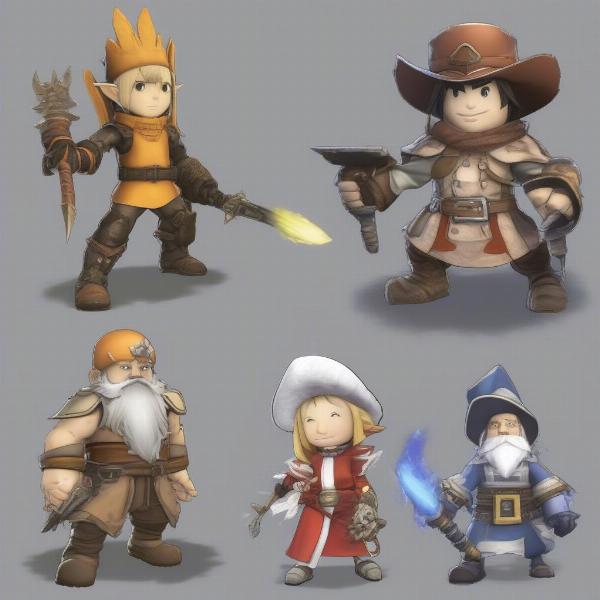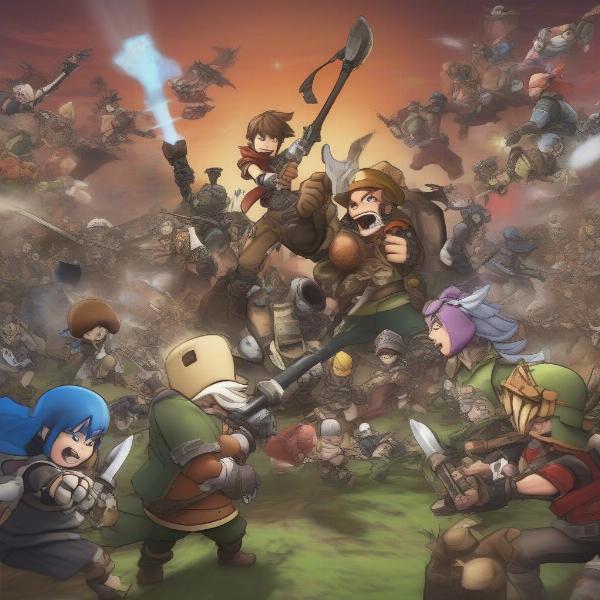Happy Wars, a free-to-play online multiplayer game, offers a unique blend of chaotic action and strategic team play. This article from supremeduelist.blog will explore the ins and outs of Happy Wars, delving into its core mechanics, appealing gameplay, and why it maintains a dedicated player base years after its initial release. We aim to provide valuable insights into how this seemingly simple title delivers hours of engaging fun, focusing on the game’s distinct classes, tactical considerations, and overall accessibility.
 happy wars gameplay action chaotic fun
happy wars gameplay action chaotic fun
This guide will take you through the different aspects of Happy Wars, breaking down its strengths and areas where it could be improved. We’ll examine the class system, the various game modes, and the subtle tactical nuances that often go unnoticed by newcomers. We’ll also touch upon the community aspect and what keeps players coming back to this vibrant, war-torn world. For those curious about similar games, it’s worth checking out the history of war games in the middle ages, to see how far gaming has come.
Understanding the Core Mechanics of Happy Wars
Happy Wars’ core gameplay revolves around team-based combat where players choose from a variety of character classes, each with its distinct abilities and roles. These classes, including Warriors, Clerics, Mages, and Engineers, have their own unique skills that determine how they contribute to team battles. The Warrior class, for example, excels in close-quarters combat and disruption, while Clerics provide crucial healing and support to their teammates. Understanding the strengths and weaknesses of each class is key to effectively contributing to the team’s success. This depth allows players to develop their own styles and experiment with different team compositions.
Class System and Roles
The class system in Happy Wars is designed to be both accessible and engaging. Each class possesses unique strengths and weaknesses, encouraging players to work collaboratively to achieve victory. Warriors are the frontline fighters, Mages are ranged damage dealers, Clerics are essential for healing and support, and Engineers construct siege weapons and provide other strategic support options. The varied roles within each class allow for different tactical styles, which increases the replayability of Happy Wars. This ensures that there’s a class for every player, whether they prefer a direct assault or a more supportive approach.
 happy wars classes diversity unique abilities roles
happy wars classes diversity unique abilities roles
“The beauty of Happy Wars lies in its simplicity combined with a surprising amount of tactical depth. Mastering your class and learning how to synergize with your team can truly elevate your gameplay experience.” – Eleanor Vance, Lead Game Design Analyst.
Game Modes and Objectives
Happy Wars offers various game modes, each requiring a slightly different strategic approach. From the classic Castle Siege mode, where teams must destroy the opponent’s castle while defending their own, to the more straightforward Skirmish mode which focuses on eliminating the other team, there is ample variety to keep players engaged. These modes force teams to adapt their tactics, highlighting the need for effective communication and collaborative decision-making. The variety of the game modes ensures that the gameplay stays fresh and exciting. Similar to how classic titles like lego star wars games on xbox 360 provided varied challenges, Happy Wars ensures continuous engagement.
Tactical Nuances and Strategic Depth
While the game appears simple on the surface, Happy Wars features many hidden tactical layers. Effective team composition, awareness of enemy positioning, and strategic usage of special abilities are critical to success. Knowing when to push, retreat, and use your abilities is more important than raw skill, which makes the game appealing to both casual and strategic players. This emphasizes the need for teamwork and strategic thinking in order to dominate in matches.
Utilizing Special Abilities Effectively
Special abilities in Happy Wars are a crucial part of combat, and knowing when to use them is key to winning. For instance, a Mage’s area of effect spells can be devastating against groups of enemies, while a Cleric’s healing and support skills are vital to keeping the team alive. Using special abilities at the right time can dramatically change the tide of battle and give your team the upper hand. The use of these abilities adds another layer of tactical depth to the gameplay and rewards players who plan their attacks carefully.
Teamwork and Coordination
Teamwork is paramount in Happy Wars. A well-coordinated team can easily overcome a more skilled but disorganized opponent. Communication and working together is a basic requirement, but effective communication using in-game cues and utilizing class abilities strategically ensures success. The importance of synergy is a key element of what makes Happy Wars an enjoyable multiplayer experience, and is also a part of some of the more complex gaming narratives, such as the are the star wars games canon in the extended universe.
The Accessibility of Happy Wars and its Community
Happy Wars boasts a low barrier to entry with its free-to-play model, which is a large part of why it maintains its player base. The learning curve is relatively gentle, making the game approachable for new players, but its strategic elements allow experienced players to hone their skills. This balance between accessibility and complexity is crucial to the game’s ongoing popularity.
Why Happy Wars Maintains a Dedicated Player Base
Despite being several years old, Happy Wars still has a dedicated player base. This is due to a variety of factors, such as the addictive gameplay, the variety of the game modes, and the strong sense of community. The game’s blend of chaotic fun and tactical depth is what keeps players coming back for more. The developers’ continued support, with updates and balance changes, shows that they understand the community is still enjoying the game.
 happy wars community engagement active player base
happy wars community engagement active player base
“The accessibility of Happy Wars, combined with its fun and engaging gameplay, has created a resilient and active community over the years. The social dynamics within the game are a big part of why it remains so popular.” – Dr. Kenji Tanaka, Game Community Researcher.
Free-to-Play Model and In-Game Purchases
The free-to-play model allows anyone to try out Happy Wars without any financial commitment. While in-game purchases exist, they are not necessary to enjoy the game. The option to spend on cosmetics and other enhancements is there for players who want it, but it doesn’t impact the balance or core gameplay experience. This fair approach is essential to the game’s longevity and has helped maintain a healthy player base. Similar to the anticipation around war of the worlds game release date, consistent updates keep the game fresh.
Conclusion: Embracing the Chaos of Happy Wars
Happy Wars, despite its age, remains a compelling and engaging free-to-play experience, providing a unique blend of chaotic action and tactical gameplay that continues to draw players back. Its accessible nature, combined with its surprisingly deep strategic layers, makes it a game that’s easy to pick up but difficult to master. Whether you’re a casual gamer or a strategy enthusiast, Happy Wars has something to offer. At supremeduelist.blog, we encourage you to explore all it has to offer, diving into its chaotic fun. So why not join the battle, choose your class, and embrace the chaos?
Leave a Reply